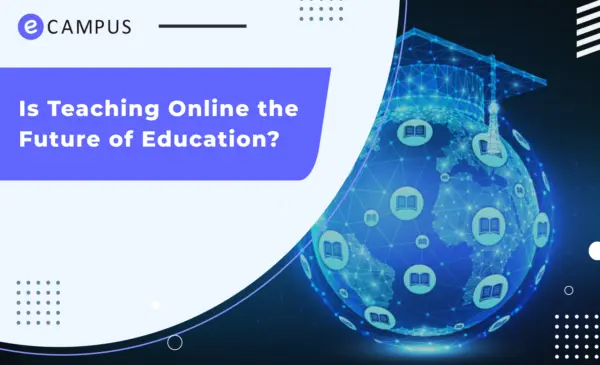Is Teaching Online the Future of Education?
COVID-19 has altered our lifestyles. It influences how we communicate, spend time with our families, work, and travel. It not only motivated us to seek out new opportunities, but it also encouraged us to try new technology for the first time.
All classes were moved online almost instantly, leaving many teachers with no choice. The traditional educational approach has shifted significantly in recent years. Physical presence in the classroom is no longer the only way to learn – at least not in the age of new technology. Nowadays, as long as you have an internet connection, you can get a good education whenever and wherever you choose. We’ve arrived at a pivotal moment in online education’s evolution.
So, is online learning the wave of the future in education?
Let’s take a closer look at this question, concentrating on four key areas.
- What was the impact of COVID19 on online education?
- The challenges that teachers have to deal with.
- What can we do to increase the quality of our online teaching
What was the impact of COVID19 on online education?
Before the outbreak, online learning was a thriving industry, with millions of dollars invested globally in instructional technology. The propagation of COVID-19 has sent shockwaves around the world. The public health crisis, which is unprecedented in our lifetimes, has resulted in a great deal of human misery and death. Individuals and educational institutions have been spending more money on language programs, video conferencing platforms like Zoom, online professional development courses, and visual training in recent months.
Distance learning became the lifeblood of education during the epidemic, but the opportunities presented by digital technology outstripped the crisis’s stopgap solution.
No one expected Covid-19 to transform our world and cause significant changes in our way of life. Because numerous changes have occurred around the world, the virus has spread like wildfire, and it has taken time for everyone to acclimate to the new routine.
Students could study educational content with their own eyes and formal learning programs at their own pace utilising online learning tools, as well as real-time courses led by their teachers using visual forums. Online learning providers are very economical, offer a lot of flexibility, and frequently offer special student and teacher discounts.
Challenges that teachers have to deal with!
Teachers’ teaching strategies should now evolve to cope with the current teaching method. One of the most difficult challenges that teachers face today when teaching online is a lack of ‘attention.’ When taking online classes, children are free to mute their microphones (and talk to whomever they want), whereas some children are also prone to getting up and wandering away from their class. The main issue is engaging students effectively online.
These problems can be solved fast and efficiently with the correct technology. Initially, online classes were held using a range of inadequate software that was publicly available. Online learning was vital during the pandemic, but its consequences should not be disregarded. Not every student can take online classes because they lack cell phones, laptops, or a reliable internet connection. Regrettably, our society’s poorest citizens have suffered the most.
How to increase the quality of online teaching!
Moreover, technology does not just change methods of teaching and learning, it can also elevate the role of teachers from imparting received knowledge towards working as co-creators of knowledge, as coaches, as mentors and as evaluators.
Digital technology has changed the way people learn, how they learn, and where and when they learn. Teachers and students can use technology to obtain specialized knowledge not found in textbooks, in multiple formats, and across time and space. Intelligent digital learning systems that collaborate with teachers can not only teach youngsters science, but also track how they study, what tasks and ideas they enjoy, and what difficulties they find dull or difficult. The systems can then alter the learning experience with tremendous granularity and precision to fit the students’ learning styles. Similarly, rather than just studying experiments, virtual laboratories can allow students to design, conduct, and learn from them.
To get around this, teachers turn to interactive video providers, who provide a variety of features to assist teachers in developing more relevant courses and preparing for online classes. More than 65 percent of teachers used ed-tech regularly last year, and as online education grows more important, we’re confident that interactive video will become a critical tool for most teachers.
Conclusion:
Our world appears to be in a constant flux right now, but one thing is certain : regardless of the pandemic, the online education sector will continue to expand and thrive. Learning has aided technological growth, while technology has aided learning. Both offline and online learning will grow intertwined, and online education will eventually become a standard part of schooling. Technology has been an integral element of academics under Covid and will continue to do so in the future.



Leave a Reply